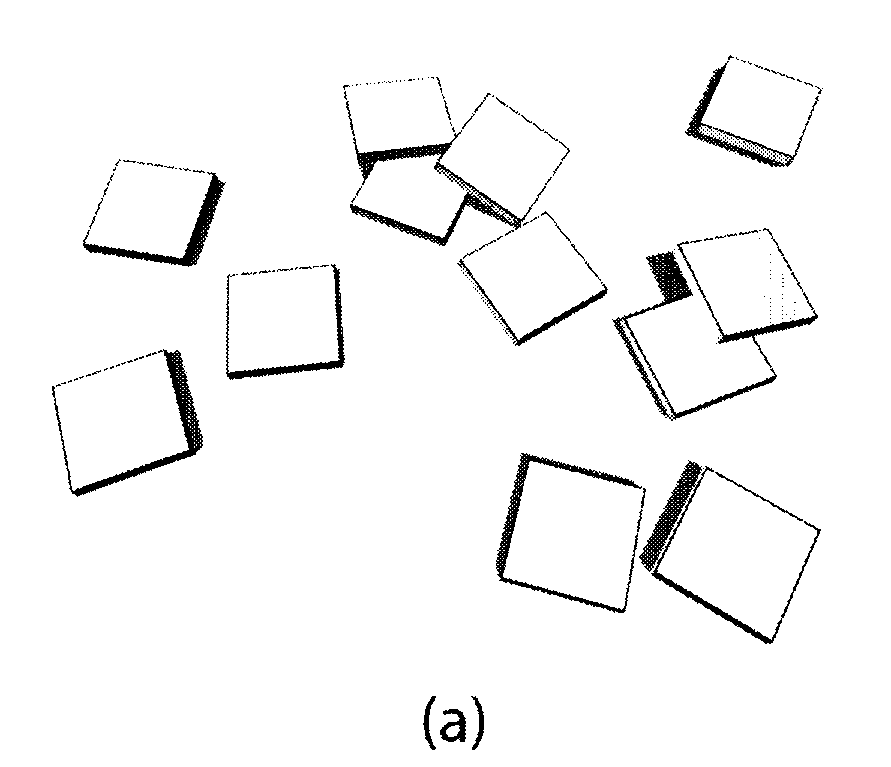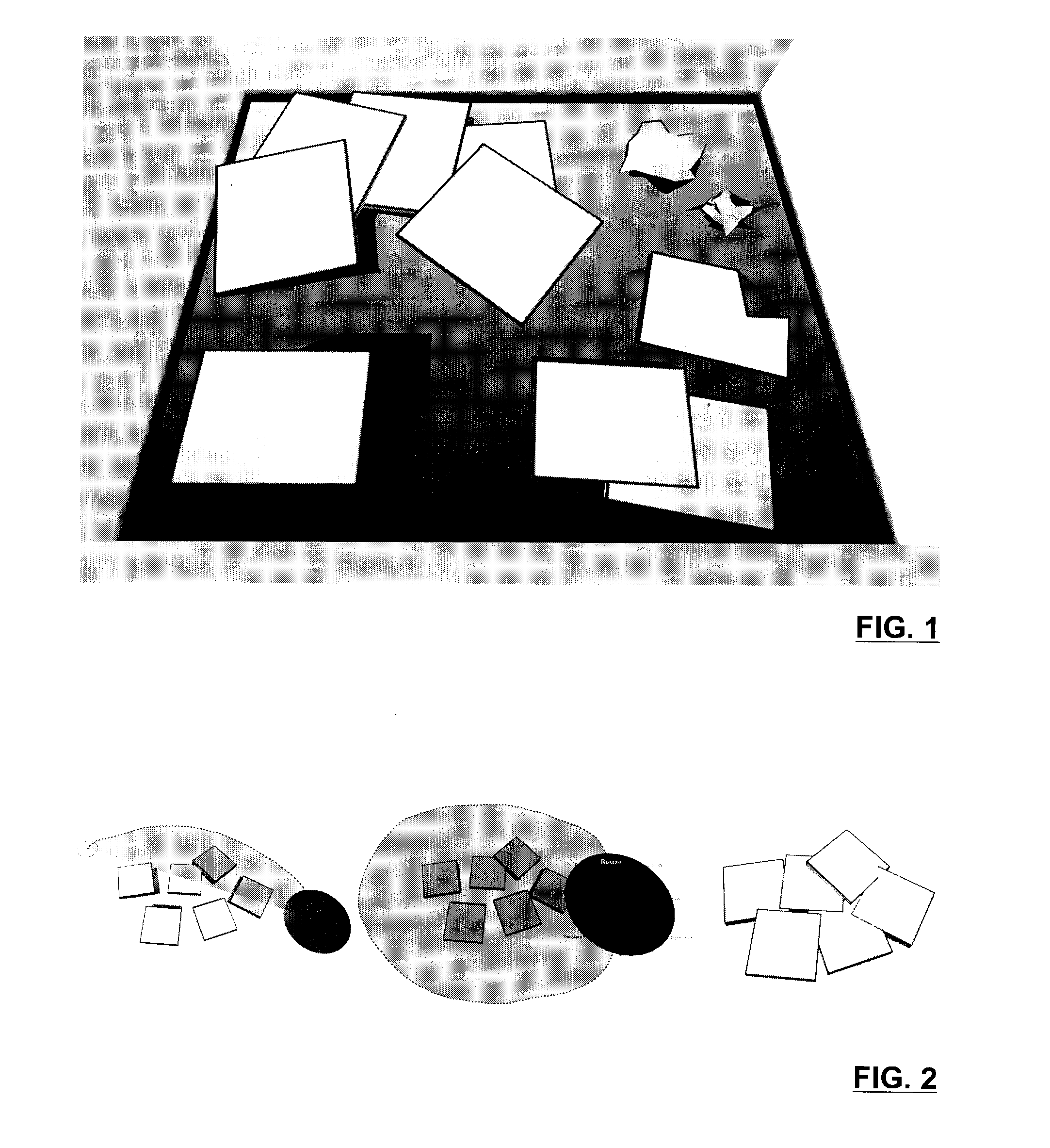System for organizing and visualizing display objects
a display object and object technology, applied in the field of organizing and visualizing display objects, can solve the problems of retaining useless documents, requiring more effort in filing, and encouraging premature storage of low-value documents, so as to enhance the interaction and realism of objects, and enhance the browsing technique
- Summary
- Abstract
- Description
- Claims
- Application Information
AI Technical Summary
Benefits of technology
Problems solved by technology
Method used
Image
Examples
examples
[0080]Note that the term “BumpTop™” is used herein to describe a computer product in accordance with the present invention, according to one example embodiment.
[0081]BumpTop™ provides users with a perspective “2½D” view onto a planar desktop surface tilted 25 degrees with respect to the camera, as illustrated in FIG. 1. This angle is preferred over a top-down perspective view (which resembles a flat desktop users are accustomed to) because users may find it difficult to distinguish the depths of piles and confused them with single objects.
[0082]In this example, motion is constrained to the desktop by the walls enclosing it. The wall corners provide a place for documents to pile up on top of each other and act as a landscape feature that could aid in cognitive grouping of documents. Alternatively, the user can also enable the use of the screen boundaries as walls, off of which display objects will bump and collide. The desktop texture has a number of circles which act as “passive lan...
PUM
 Login to View More
Login to View More Abstract
Description
Claims
Application Information
 Login to View More
Login to View More - R&D
- Intellectual Property
- Life Sciences
- Materials
- Tech Scout
- Unparalleled Data Quality
- Higher Quality Content
- 60% Fewer Hallucinations
Browse by: Latest US Patents, China's latest patents, Technical Efficacy Thesaurus, Application Domain, Technology Topic, Popular Technical Reports.
© 2025 PatSnap. All rights reserved.Legal|Privacy policy|Modern Slavery Act Transparency Statement|Sitemap|About US| Contact US: help@patsnap.com



